What Are Truffles? All About This Coveted Ingredient
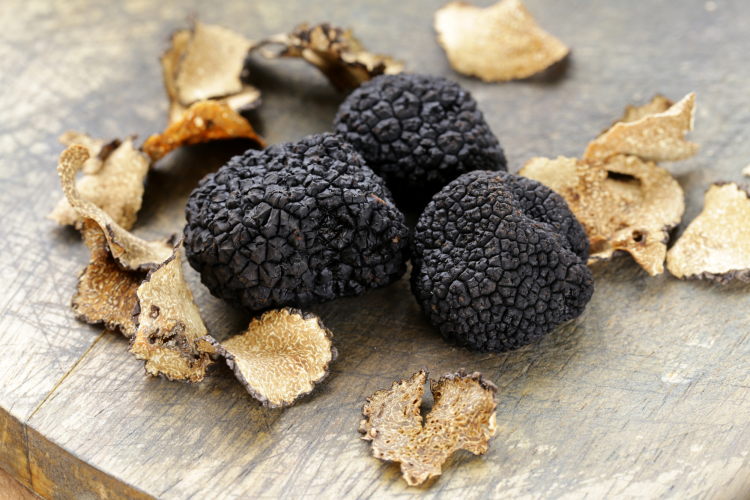
As you browse the aisles of a gourmet food store or peruse the menu at a classy restaurant, you may stop to wonder, what are truffles? Food items that contain real truffles can be shockingly expensive, so you may be surprised to learn that truffles are a humble fungus. A humble fungus with an upscale reputation and indescribable flavor, that is.
Trying to understand these pricey little morsels can raise more questions than answers. Are truffles mushrooms? If not, what are truffles? And more importantly, what do truffles taste like? Here’s everything you should know about truffles and how you can incorporate them into your own luxurious recipes.
Jump to Section
- What Are Truffles?
- What Does a Truffle Taste Like?
- Where Can You Buy Truffles?
- What Meals Can You Make With Truffles?
- Preparing Truffles
- The Shelf Life of Truffles
What Are Truffles?
Aren’t truffles those little sweets that come in Valentine’s boxes? Real, natural truffles shouldn’t be confused with the sweet chocolate confections that are also called truffles. So what are truffles, actually? Truffles are the fruiting body of an edible underground fungus, often used in fine cooking. There are estimated to be over 180 species in the Tuberaceae family, but only a handful of these truffles are edible. The most popular culinary varieties include summer black truffles, winter black truffles, burgundy truffles, white truffles and bianchetto truffles.
What are truffles like on the outside? Varying truffle species can look different, but most are about the size of an egg. Some truffles can grow to be as big as a baseball, but these are quite rare.
What about the inside? When they’re cut open, most truffles have a texture like that of sliced hard cheese. The inside is often a pale grayish color with intense white marbling, almost resembling the fat marbling in beef.
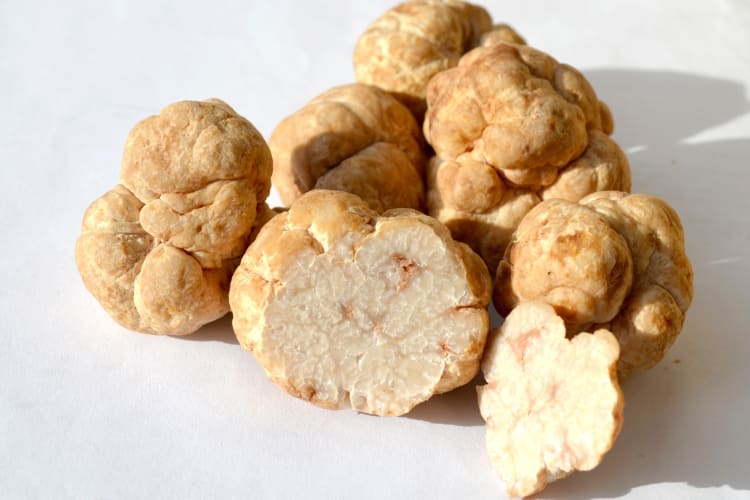
Black Truffle vs. White Truffle
Just knowing the answer to “What are truffles” isn’t always enough. It’s also important to ask, “What are truffles of different types like?” Most edible truffle species can be put into two categories: black or white truffles.
What are truffles in the “black” category like? Black truffles in general look like a large, rough and bumpy lump of coal. Black truffles are one of the most common truffle varieties you’ll find on the market, including the much more affordable Tuber indicum, also known as Asian truffles or Chinese truffles. Chinese truffles still offer some culinary value, but they are not nearly as decadent as other truffle varieties.
Summer black truffles have an earthy, nutty flavor and tend to be harvested from early to late summer. Despite their name, burgundy truffles can also be considered in the “black truffle” category, offering a similar earthy, nutty flavor with an edge of sweetness. Winter black truffles have a very robust flavor palate, are the most prized out of all black truffles and are harvested from December through February.
What are white truffles like? White truffles in general look smoother, resembling pale rocks or potatoes. White truffles, also known as Alba white truffles or Tuber magnatum pico, are a type of truffle within the “white truffle” category. Found in a distinct area of Italy, these are the rarest and most expensive truffles in the world, with a garlicky, cheesy and musky aroma. Bianchetto truffles can also sometimes be considered a white truffle, although they’re a little more brownish in color and present a stronger garlicky flavor. These grow throughout Europe at the beginning of each year.
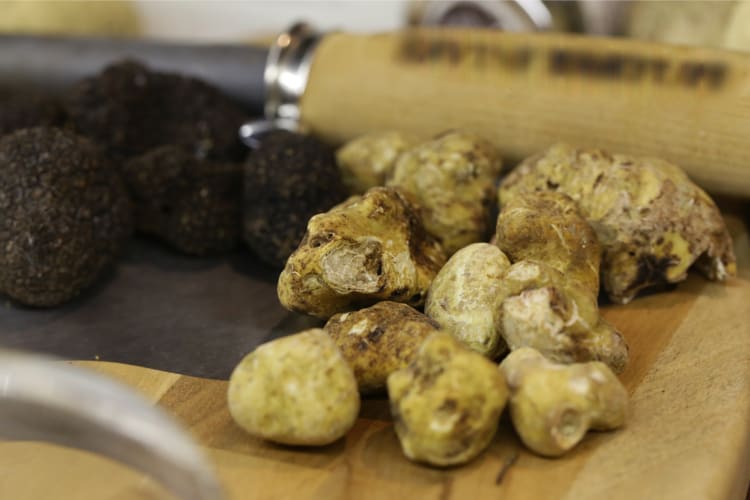
Are Truffles Mushrooms?
Truffles aren’t mushrooms in the way we usually think of them, but what are truffles if they aren’t mushrooms? Like mushrooms, they are the fruiting and spore-containing part of fungus growth. Both mushrooms and truffles are in the fungi kingdom, but truffles are part of the Tuberaceae family, while most mushrooms belong to the Agaricaceae family. The big difference is that truffles grow below ground, while mushrooms grow above ground.
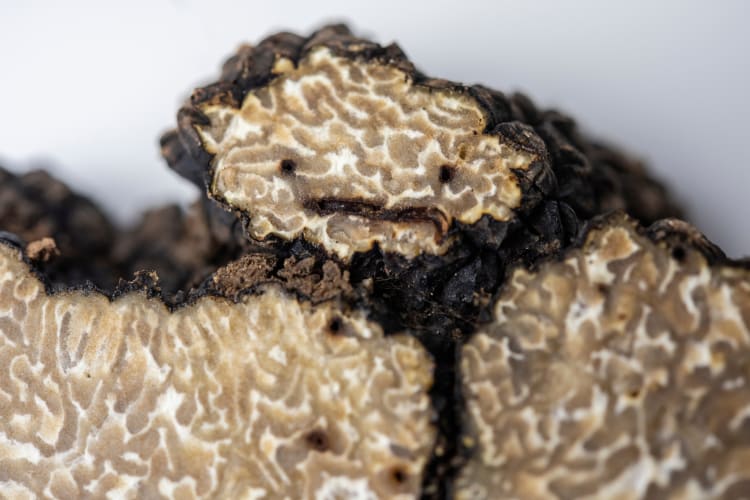
What Is Truffle Oil?
Now that you know the answer to “What are truffles,” what are truffle oils? Truffle oil isn’t made from 100% pure truffles. If you’re lucky, your truffle oil will probably be made with olive oil that is infused with the essence of real truffles. However, not all truffle oils and other truffle-labeled products are what they claim to be. Some are likely made with the cheaper and weaker-flavored Chinese truffle, or else they are made with artificial ingredients.
What are truffle flavors made with if not real truffles? Many “truffle” products contain the organosulfur compound 2,4-dithiapentane as one of their key ingredients. Oddly enough, this is also one of the recognized scent components in foot odor — perhaps explaining why some people can’t stand the flavor of truffles.
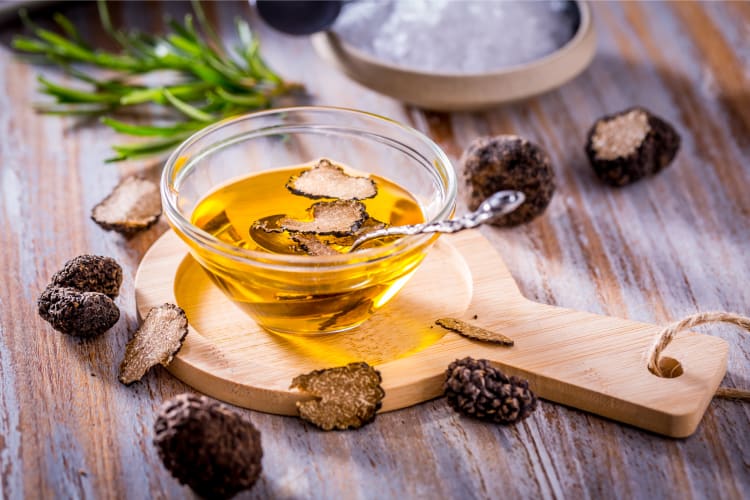
What Does a Truffle Taste Like?
The flavor of a truffle is difficult to describe. In general, truffles have an umami-like flavor and aroma that is comparable to a savory meat or seafood broth, with undertones of earthiness and musk. Each culinary variety will taste slightly different, so some may present as more earthy, nutty, spicy, sweet or sharp than others.
Many people would say that truffles are an “acquired taste,” much like caviar, blue cheese or other high-end foods. People with positive experiences often describe the flavor as delightfully savory, deep, earthy and nutty. What are truffles like for people who dislike them? Some more scalding reviews have claimed that truffles taste sweaty, acrid, rotten or even like stinky feet.
If you tend to enjoy other divisive foods like oysters, olives, mushrooms or liver, then truffles may be right up your alley. Even if you prefer your flavors on the safe side, it’s worth tasting this rare culinary ingredient next time you have the chance.
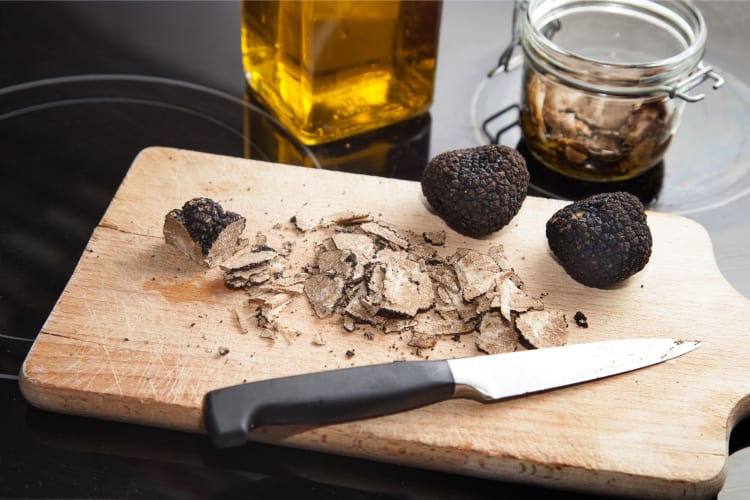
Where Can You Buy Truffles?
If you visit a specialty gourmet food store, you may be able to find truffles wrapped in paper towels and put on the shelf or locked behind a glass case. However, your best bet is to search online for a reputable truffle retailer. Understand that the specific truffle you seek may not be in season at any given time; each variety comes into season for a limited time each year. If you’re looking for a specific variety, you may need to wait until it comes into season —or risk buying a faux or faulty product.
What are truffles priced at? If you’re going to seek out a real, fresh truffle, be prepared to pay a pretty penny. High-quality truffles usually cost around $3.00 or more per gram, and a whole truffle can easily cost thousands of dollars.
Perhaps the bigger question here is, what are truffles really worth to some people? Truffles are one of the most expensive foods in the world. They're so expensive, in fact, that vast underground criminal markets have developed surrounding the sale of this rare fungus. The most expensive truffle ever sold was a 2.86 lb Italian white truffle, valued at $330,000. That’s more than half its weight in gold.
Of course, if you live in an area where truffles grow, you could always try foraging for them yourself! But you must be extremely cautious to identify them correctly and avoid consuming a disgusting lookalike or poisonous mushroom.
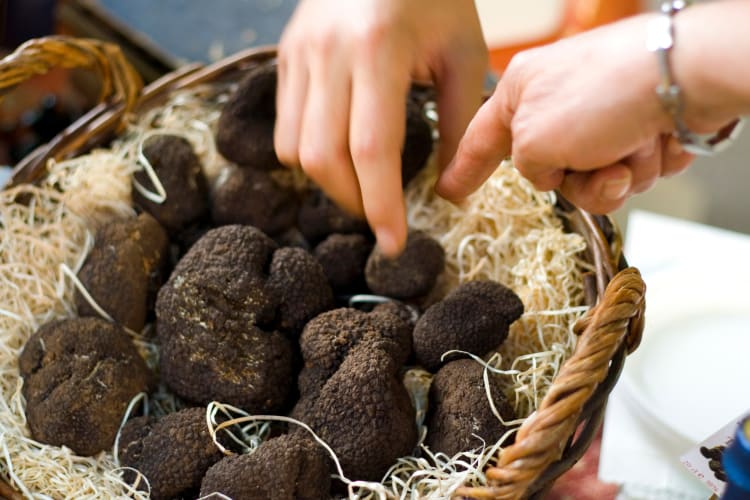
Why Are Truffles So Expensive?
What are truffles priced so highly for? The cost of your truffle or truffle products will depend greatly on the species, size, quality and freshness. In short, truffles are incredibly expensive because they are difficult to grow in captivity, difficult to find in nature and have a very short lifespan once harvested.
Truffle varieties can be found all across the world, but they are incredibly picky about when and where they’ll grow. What are truffles’ ideal growing conditions? Firstly, they must grow alongside trees so that the mycelium network weaves itself in with the tree's roots. From this, a symbiotic relationship develops, where the fungus draws in water for the tree, and the tree gives sugars to the fungus, which in turn develop the fruiting body. However, the truffles will only grow under certain kinds of trees, including oak, fir, beech, hazel, birch and poplar trees.
Even the perfect environmental conditions won’t guarantee that a truffle patch will grow. Many people dedicate weeks and months of the year to hunting truffles in the wild. In the old days, truffle-hunting pigs were used to locate and uncover hidden truffles. Today, dogs make much more reliable hunting companions, as they are less likely to chow down on the truffles for themselves!
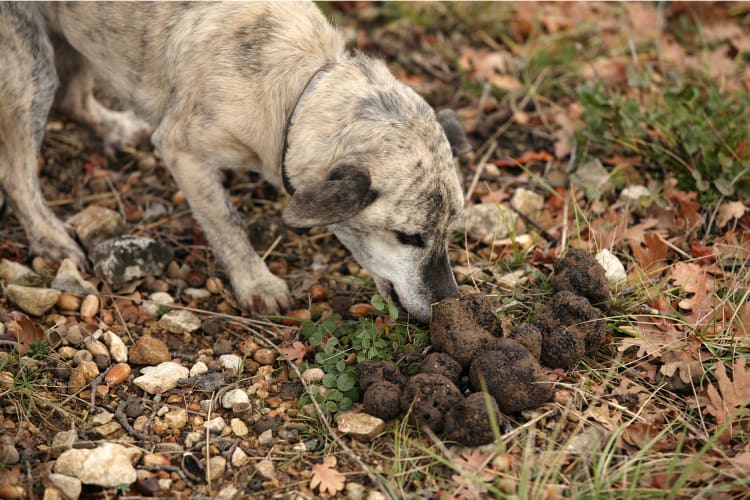
Farming Truffles
There has been some limited success with growing truffles in captivity, but the process is incredibly difficult and time-consuming, with little chance of turning a successful crop. It can take years of work for a farmer to produce their first batch of truffles.
To grow truffles, the tree must be inoculated with the fungus, and then consistently irrigated and allowed to grow until the fruiting bodies — maybe, possibly, hopefully — develop. As advanced as our agricultural technology may be, we still haven’t found a way to perfect growing truffles in captivity. Try as we might, it seems that nature knows best when it comes to growing these rare little morsels.
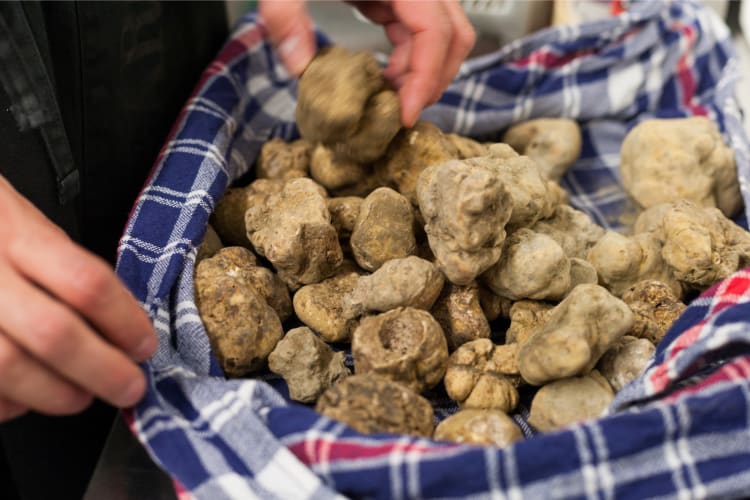
What Meals Can You Make With Truffles?
Now that you know so much about truffles, you may wonder, “What are truffles even used for?” Due to their price and scarcity, you’re not likely to see truffles as a common ingredient in household recipes. Unless you’re a five-star chef or a true culinary adventurist, truffles are a rarity to encounter in the kitchen.
With that being said, truffles are certainly worth a try anytime you have the chance, but it’s vital to know how to cook them so you can appreciate their best qualities — and avoid ruining their delicate structure. If you’re determined to take on this decadent ingredient, joining cooking classes near you or online cooking classes can be a smart way to learn about truffles and ensure you approach them correctly in the kitchen.
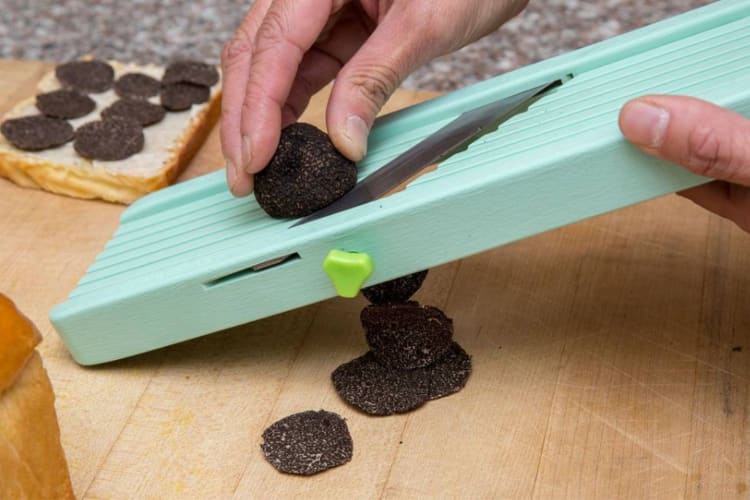
What are truffles used in? Truffles are a very pungent ingredient, and a little bit goes a long way in almost any recipe. Black and white truffles are generally best when cooked differently. White truffles, for example, express their best flavor when served at room temperature or sliced over warm dishes. The garlicky notes of white truffles can also complement lighter meats like turkey and chicken.
Black truffles are delicious raw or cooked, especially when paired with creamy flavors like butter or Parmesan cheese. Black truffles will also play well with deep, savory meats like duck or steak. For a decadent spin on seafood classics, try tossing scallops, lobster or prawns in a truffle butter sauce. Oddly enough, truffles also taste amazing with eggs.
Preparing Truffles
Here are some things to keep in mind when preparing truffles for cooking or storage:
- Do not wash the truffles with water or soap. Use a soft-bristled toothbrush when needed to remove dirt from the exterior.
- Understand your specific truffle variety before cooking.
- White truffles are best served raw at room temperature.
- Black truffles can be served raw or cooked at low temperatures to enhance their flavor.
- Grate or thinly slice truffles on top of a dish as a flavorful garnish.
- Add black truffle slices to a hot burger or sandwich, especially one with cheese or eggs.
- Grate black truffle over a warm creamy casserole or alfredo pasta.
- Add sliced white truffle to salads, cold dishes, pasta or risotto.
- Infuse your own truffle oil.
- Add truffle oil to pasta, pizzas, french fries, soups or salad dressings.
- Pair truffles with ice cream, chocolate, or honey for a unique flavor experience.
- Store unused truffles in a sealed container with dry rice. Place on the top shelf in the fridge for up to two weeks.
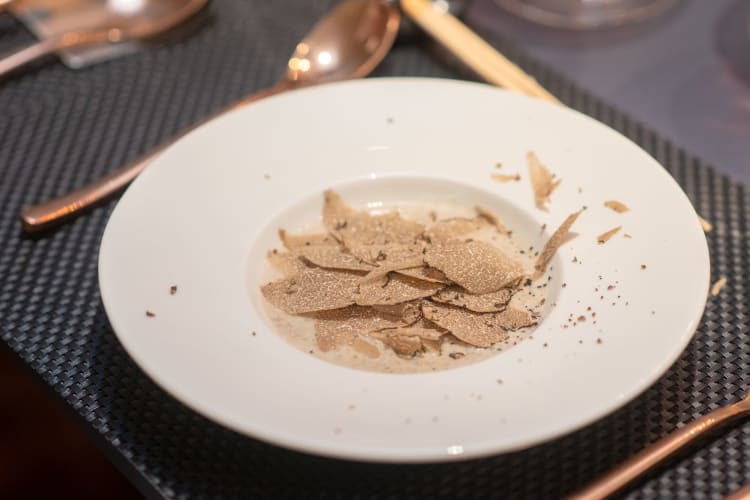
The Shelf Life of Truffles
What are truffles’ shelf lives? Truffles have a very short shelf life, only lasting about four to five days. Any longer than that and their flavor will be substantially diminished. If they start to spoil, the truffles will become rubbery and develop an ammonia-like flavor and scent. Therefore, they have to be harvested, transported and consumed at a very fast pace, adding to their overall cost.
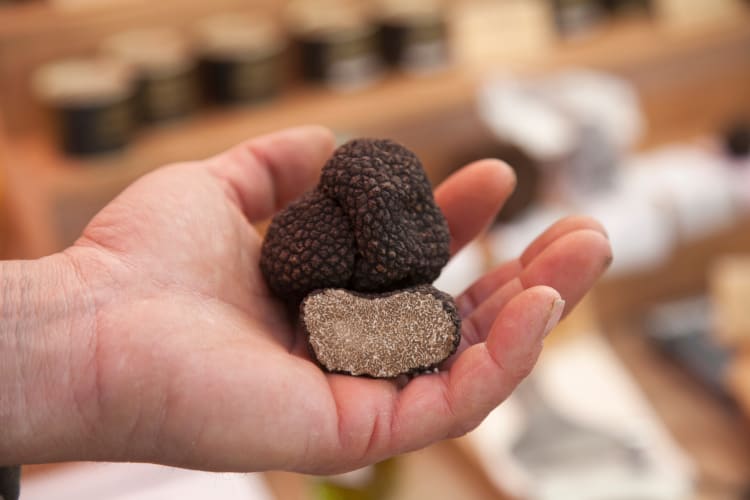
Next time you’re dining out at a fabulous restaurant and one of your dinner guests asks, “What are truffles?”, you’ll know exactly what to tell them! Of course, truffles are much more than just a simple fungus. These indulgent, earthy treasures also have a rich history, fascinating biology and a lofty status in the culinary world.
For even more ways to explore your favorite foods, check out other experiences happening on Cozymeal.
